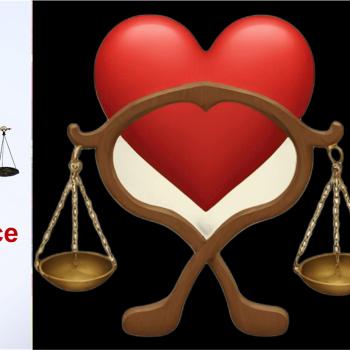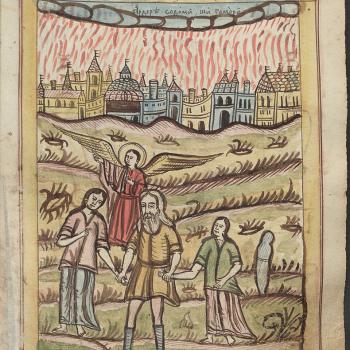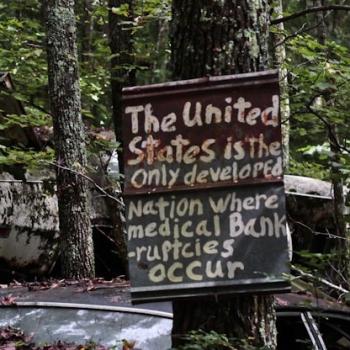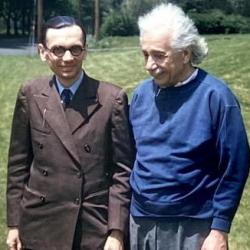By Tom Teicholz
 Who knew?
Who knew?
Who knew that basketball has a storied Jewish past, or that a non-sports guy like me would ever read, no less enjoy, a book about baseball umpires, Bruce Weber's As They See ‘Em (Scribner, 2009)? Maybe it's because Passover is a time of miracles -- or is that Chanukah? Or Purim? Or the entire sweep of Jewish history? No matter. We're here to talk sports, a subject I now know a little more about.
Last spring, as March Madness made its way into April, I sat down to watch the new documentary, The First Basket by David Vyorst -- which played at last year's Los Angeles Jewish Film Festival and was released on DVD June 2 -- where I learned that the first basket of the modern NBA (then called the Basketball Association of America) was sunk by Ossie Schectman of the New York Knickerbockers (i.e., the Knicks) on Nov. 1, 1946 at Maple Leaf Gardens.
Schechtman's Knicks teammates against the Toronto Huskies included Leo Gottlieb, Stan Stutz, Ralph Kaplowitz, Hank Rosenstein, Sonny Hertzberg, and Jake Weber -- and they won 68-66. That game certainly was one of the high watermarks of Jewball.
Vyorst tells the story of Jews and basketball through a combination of present-day interviews, archival footage, and memorabilia narrated by actor-director Peter Riegert, as both the story of the role that Jews have played in basketball, but also how basketball helped make many Jews -- for the most part children of immigrants -- Americans.
The game of basketball was started in 1891 by James Naismith, a YMCA phys. ed. teacher, as a game that could be played indoors and not take up much space -- and it spread quickly through the YMCAs. The turn of the century coincided with the great wave of Jewish immigration from Eastern Europe and the explosion of Jewish life on the Lower East Side of New York. As The First Basket explains, basketball became popular in the settlement houses, playgrounds, public schools, and other centers of Jewish life. As one former player remarked, "What were we going to do, play polo?"
In the early part of the 20th century, neighborhoods, labor unions and even department stores had basketball teams. The First Basket recalls such now-forgotten semi-pro teams as Brooklyn's Brownsville Dux, the South Philadelphia Hebrew All-Stars, and the teams of the City College of New York (CCNY) and Long Island University and how they yielded such Jewish hoop stars as Nat Holman (an early basketball player who as coach guided the CCNY teams to winning the 1950 NCAA and NIT titles); Sammy Kaplan (Dux); Barney "Mighty Mite" Sedran -- at 5-foot-4, the shortest player in the NBA Hall of Fame; All-American Nat Krinsky; Knicks head coach William "Red" Holzman (the Knicks retired the number 613 in his honor as a tribute to the number of his wins, but many Jews believe it is a sly reference to the number of commandments in the Bible); and Arnold Jacob "Red" Auerbach, a former Second Team All-Brooklyn player better known as the famed Boston Celtics coach celebrated for revolutionizing modern basketball.
Vyorst doesn't shy away from scandals, such as the CCNY point-shaving scandal of the 1950s; nor does he hesitate to mention the anti-Semitism that Hebrew hoopsters met. New York Daily News writer Paul Gallico once opined that basketball was a sport well matched to Jewish abilities for trickery and deceit.
In the 1950s, with the rise of professional sports and the rise of the second- and third-generation Jewish professional class, there was also a parallel decline of Jews in American basketball -- at least as players. Many assumed that Danny Schayes, who left the NBA in 1999, was the last of the J-Ballers. However, even as I write this, L.A. Laker Jordan Farmar is carrying on the tradition.
As The First Basket makes clear, the decline of Jewish players in the United States was not the end of American Jews' influence in the sport of basketball.
Talbot "Tal" Brody is a name that may not be familiar to American audiences. Picked 15th in the 1965 NBA draft by the Baltimore Bullets, he turned his back on the league and moved to Israel in 1966 to join Tel Aviv's Maccabi basketball team. Brody became a national hero in 1977 when he led the Israeli team to a semi-final victory against the much-favored Soviet team CSKA Moskva and announced, "We are on the map, and we are staying on the map, not only in sports but in everything." The phrase has become iconic in Israel and launched a national passion for basketball that exists to this day. Brody's contributions should not be underestimated. In 1979, Brody was the first sportsman to be awarded the Israel prize.




